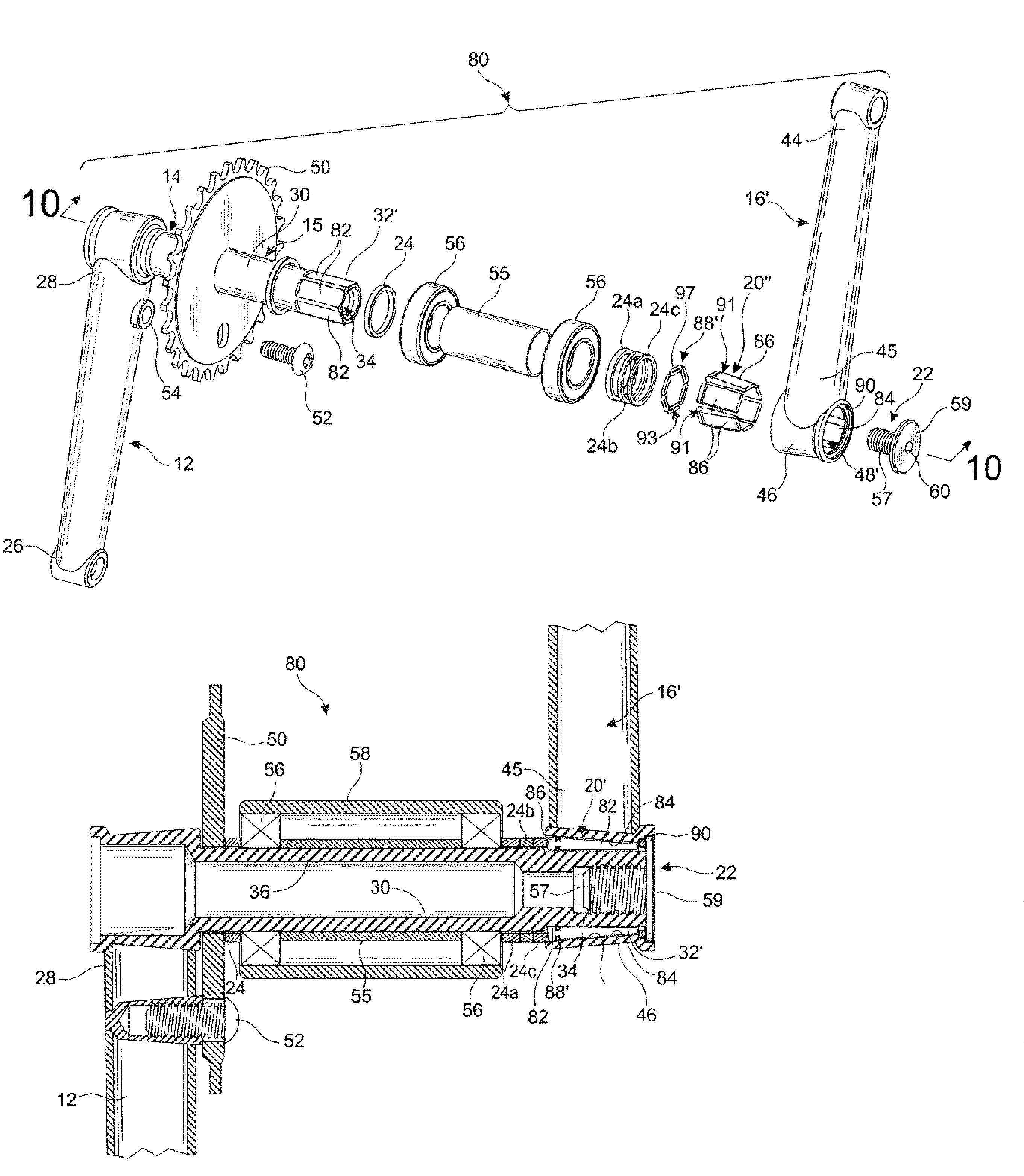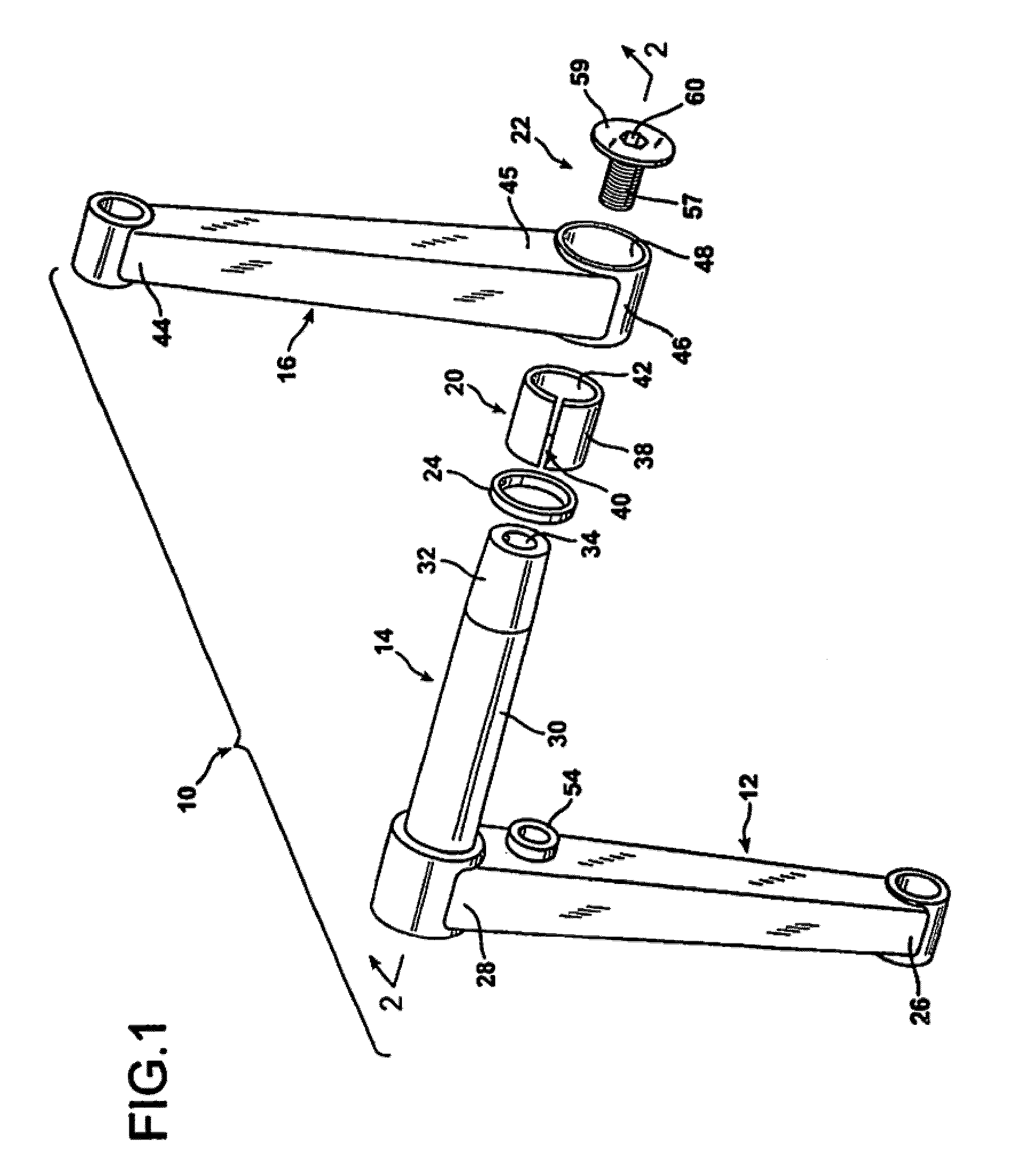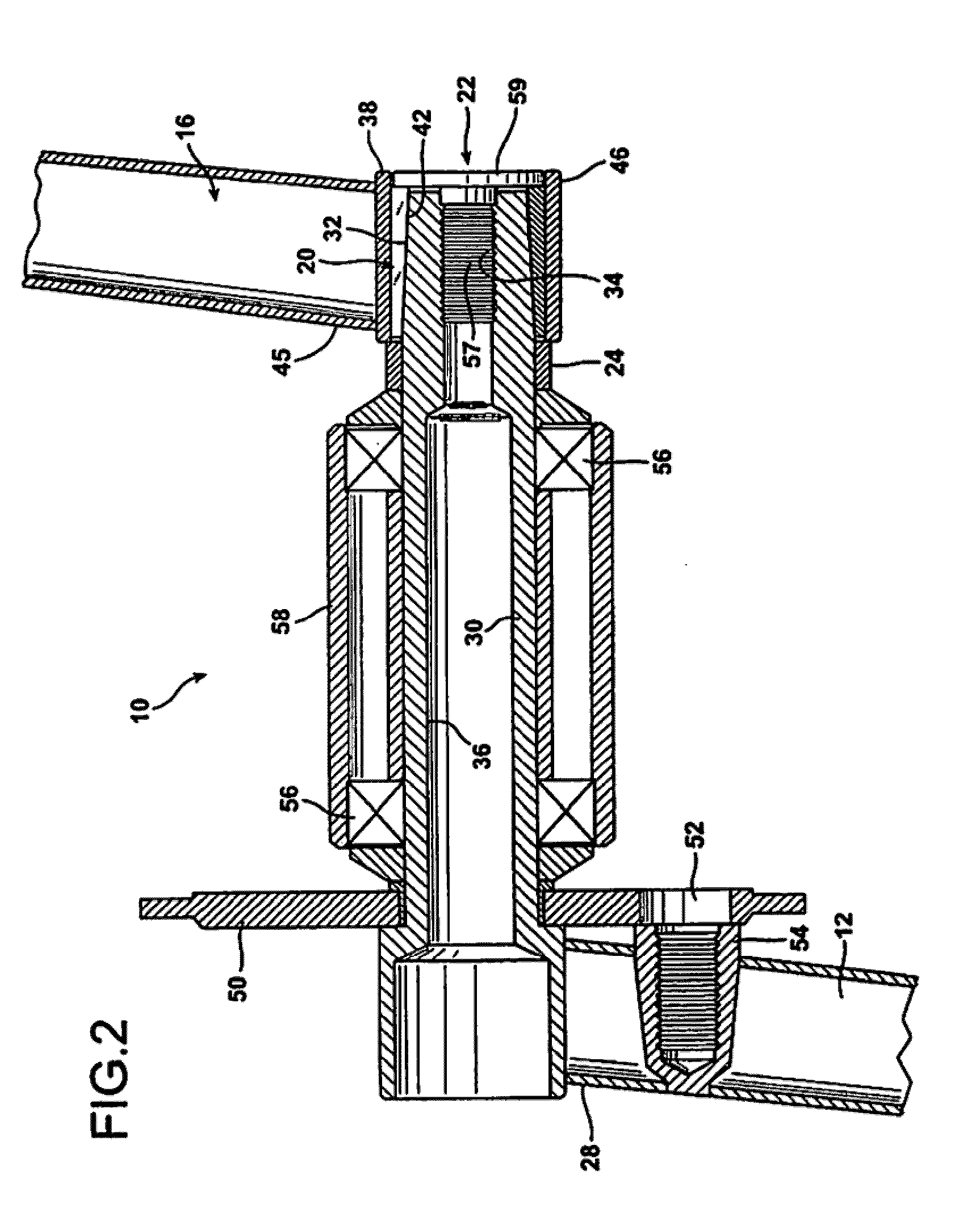Bicycle Crank Assembly
a technology of pedal cranks and cranks, which is applied in the direction of mechanical equipment, manufacturing tools, transportation and packaging, etc., can solve the problems of high production cost of joints between components, undesirable stress concentration, and increase the weight of the structure, so as to save a considerable amount of overall weight, reduce the number of bolts, and simplify the assembly procedure for users
- Summary
- Abstract
- Description
- Claims
- Application Information
AI Technical Summary
Benefits of technology
Problems solved by technology
Method used
Image
Examples
Embodiment Construction
[0057]FIGS. 1 and 2 illustrate a two-piece bicycle sprocket crank assembly 10 in which the first crank arm 12 and the axle or spindle 14 are formed together as a unitary metal structure, and in which the second crank arm 16 is formed as separate structure. The two crank arms 12 and 16 and the spindle 14 are formed of 4130 chromium-molybdenum steel alloy. The first crank arm 12 is permanently joined to the spindle 14, while the second crank arm 16 is removable from the spindle 14. In addition to the two major structural components, the bicycle sprocket crank assembly 10 is also comprised of a first, single, metal wedging sleeve 20, a first, single, metal threaded fastener 22, and a metal stop spacer 24.
[0058]The first crank arm 12 has a pedal end 26 at which a bicycle pedal is mounted in a conventional fashion, and an opposing axle end 28. The first crank element or arm 12 is radially oriented relative to the spindle 14 which extends axially therefrom at the axle end 28 of the crank ...
PUM
| Property | Measurement | Unit |
|---|---|---|
| Force | aaaaa | aaaaa |
| Flexibility | aaaaa | aaaaa |
| Shape | aaaaa | aaaaa |
Abstract
Description
Claims
Application Information
 Login to View More
Login to View More - R&D
- Intellectual Property
- Life Sciences
- Materials
- Tech Scout
- Unparalleled Data Quality
- Higher Quality Content
- 60% Fewer Hallucinations
Browse by: Latest US Patents, China's latest patents, Technical Efficacy Thesaurus, Application Domain, Technology Topic, Popular Technical Reports.
© 2025 PatSnap. All rights reserved.Legal|Privacy policy|Modern Slavery Act Transparency Statement|Sitemap|About US| Contact US: help@patsnap.com



